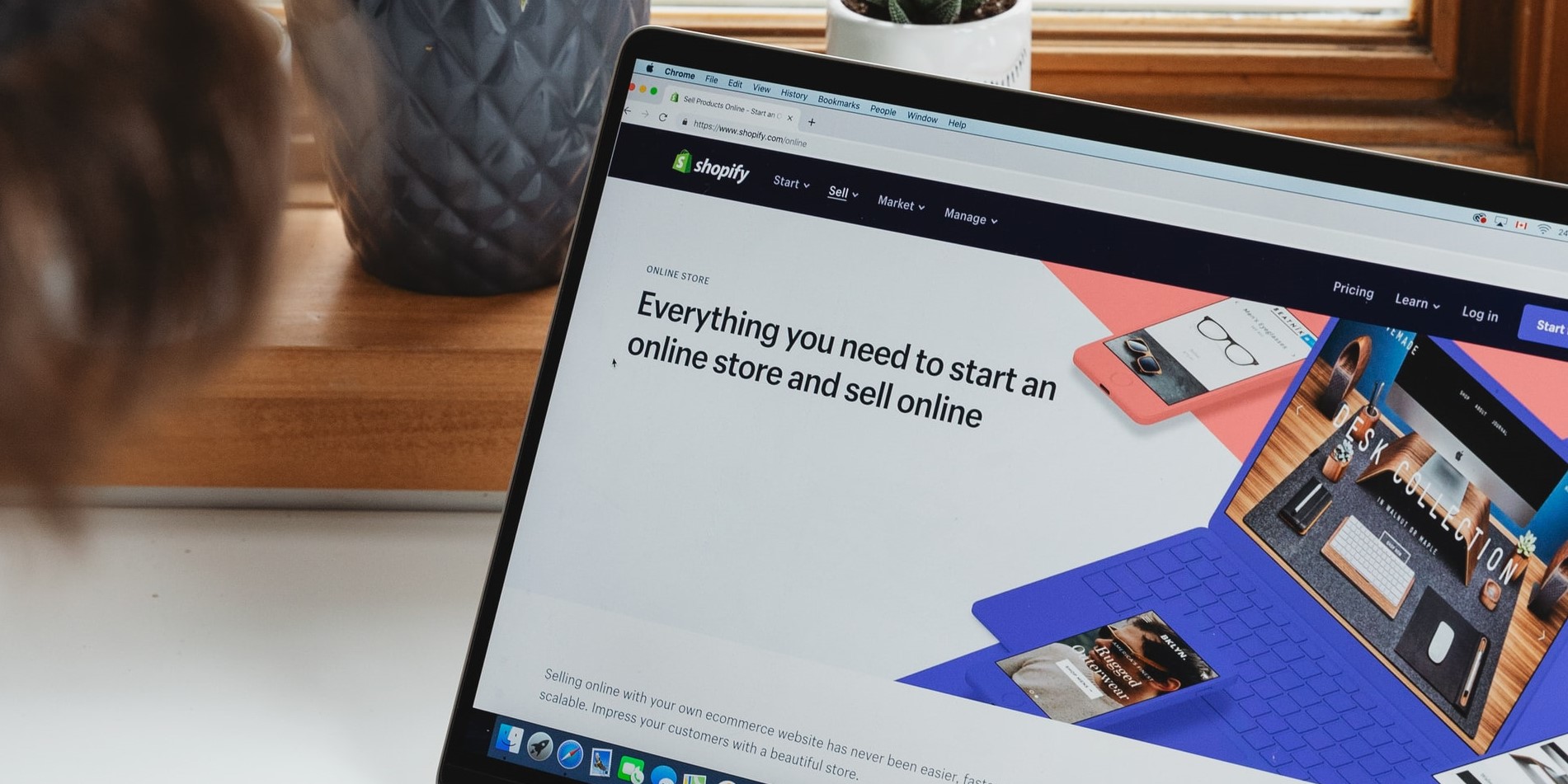Top SEO Tips for Shopify Product and Collection Pages
Do you run a Shopify website that isn’t bringing in much organic traffic? Or perhaps you get a decent amount of traffic and want to know how to take...
Read moreThe UK taxman has painted a target on the backs of ecommerce retailers. ClickThrough's Group Marketing Director, John Newton, considers the implications and the changes we are likely to see.
Anyone who has picked up a newspaper (yes, people still do that) over the last few years will likely have come across a byline berating online retailers for their greed and positioning them as the sole cause of the decline in the nation’s high streets.
But look beyond the headlines, and you’ll find a more nuanced story. The average UK retailer isn't that large, taking just £183k a year – and three-quarters of retail sales still occur offline. Over half of the purchases made on Amazon go to third-party sellers, the majority of which are small or even micro businesses. Regardless, over recent weeks there has been an increase in chatter about the potential introduction of two new taxes.
The first, a 2% online sales tax levied on goods sold, could raise as much as £2bn for the treasury according to the FT. It is designed to kill two birds with one stone – level-up the playing field for the beleaguered high-street retailer, and make a very public dent in the finances of ecommerce retailers, some of whom have arranged their finances so that a percentage of sales are pushed through low-tax territories. The second is a consumer delivery tax – a separate levy to the mandatory delivery charge that the Department for Transport has already floated recently.
So, what might the introduction of these taxes mean to the online retailer?
Let’s imagine for a moment that these new taxes DO affect consumer behaviour – what changes might we see?
If most retailers feel compelled to pass the full cost of both taxes on to customers, this would place them at a disadvantage compared to their offline cousins. As a result, they may have to fight that much harder for sales. In turn, this could drive up the price of high-converting inventory/keywords which near-guarantee a sale, and at the same time, push down the value of keywords or traffic that convert poorly. The shift to online sales may stall and could even start to decline.
It's certainly possible that an online sales tax might also create a ‘digital apartheid’ between better-off consumers who can absorb any price differential, and poorer consumers who cannot. It could force some consumers back onto the high street – if indeed they were ever able to afford to leave. Here, it is likely to be the ‘commodity’ goods that everyone buys where that price differential will be felt most keenly.
In this scenario, you could expect to see further business for the deep discounters Aldi and Lidl, with government legislation driving more custom through their bricks and mortar stores, even as they look to move their offering online. Of course, some offline retailers may simply be relieved that they can raise prices, safe in the knowledge that online prices will have also increased.
In addition, those who buy their cars through online car supermarkets, where consumers have been used to discounts of thousands of pounds off a price of a vehicle, may find they now have to pay an extra £200 pounds on a £10,000 car. Although this is unlikely to deter consumers completely, it may give them pause for thought. This in turn may encourage retailers who sell large ticket items, including cars, to find ways to plug these ‘value gaps’, including giving away products with a high-perceived value, such as free excess insurance.
So, we’ve seen the doomsday scenario. But how likely is it?
In honesty, nobody knows. But if I were to stick my neck out… I’d say it was extremely unlikely. And I have good reason to.
What’s interesting about the 2% online sales tax is that we already have a good idea as to how this is likely to be treated by the tech giants – and how consumers will respond. The Digital Services Tax was introduced in the UK in April 2020 – a 2% levy targeting profitable social media platforms, search engines and online marketplaces with over £0.5bn in global revenues and who earn more than £25m in the UK. It is clear which companies were being targeted, and the response has been somewhat predictable.
Although eBay decided to absorb the increased costs, Amazon told sellers that they would pass on the 2% charge to sellers by increasing fees, and most of those small businesses will have had no choice but to pass that on to consumers. This led to an immediate reduction in demand, with consumers abandoning Amazon in droves and heading back into the high street.
Except of course, that’s not what happened. Consumers have barely noticed. Online sales have exploded thanks to the Coronavirus, and any increase in pricing will have been put down to the COVID-related seller price gouging that eBay and Amazon have, in the main, been successful in tackling. So, if a 2% tax has already been shrugged off once, why wouldn’t the same happen again?
For many consumers, a 2% price rise will go unnoticed – but a charge on each delivery? Surely that will change behaviour? Well, in my opinion, not so much.
Here’s why.
Amazon has spent over a decade getting UK consumers hooked on unlimited express deliveries through their Prime program. The program has been so successful that the model has been copied by retailers as varied as Interflora (Delivery Pass), Deliveroo (Plus), Wiggle (Wiggle+), The Perfume Shop (Rewards Club Delivery Pass) and Laithwaite’s (Unlimited) – let alone most of the most popular fashion retailers including Next (nextunlimited), JD Sports (JDX), Missguided (VIP Pass), ASOS (Premier Delivery), boohoo (Premier), PrettyLittleThing (PLT Royalty), Nasty Gal (VGVIP), Karen Millen (Gold) and many, many others. Adding even a pound or two to the average order is unlikely to dull the thrill of near-instant gratification that next- or same-day delivery provides.
Amazon has also been experimenting with a nominated weekly delivery day for some time and has recently re-introduced small incentives for delaying the delivery of orders, which allows them to create optimal delivery schedules with minimal distancing between stops. Jeff Bezos has rightly recognised that consumers have put a price on prompt delivery, and so in order to persuade them to accept a longer delivery time, he may also recognise that a value exchange needs to take place – monetary or otherwise. Exchanging the positive ‘hit’ of a saving on your purchase price for the mere avoidance of a new, incremental tax may not be a strong enough motivator for change.
Another play could be to increase consumer awareness of the environmental impact of always-on delivery. Consumers must instinctively know that their addiction to super-fast delivery is taking a toll on the world, but most wouldn’t be able to quantify it. Even so, surely even the naivest shopper will understand that delivering ten items to ten properties is likely to be more harmful to the environment than delivering those same ten items to a single place.
Again, in this scenario, Amazon is in a strong position thanks to its network of lockers throughout the country. These lockers let consumers receive goods quickly but also allow Amazon to consolidate multiple “last mile” costs into a single trip. Services such as CollectPlus will allow other retailers to play too, and it’s not inconceivable that a tax carve-out could be made for purchases delivered to a communal storage centre.
It’s also worth remembering that the deregulation of the UK postal service in 2006 led directly to the fragmentation of deliveries spread across multiple providers, each with their own carbon footprint. Although a Labour initiative, the move echoed the Conservative belief in the power of competition, and as such is rarely cited as part of the environmental problem on either side of the house. Yet, a tax on deliveries could open the door to intermediaries who only exist to consolidate parcels from multiple retailers into a single taxable door-drop, putting consumers in control and potentially forcing weaker and less-popular services to the wall.
Nothing affects a politician’s plans more than events – and 2020 has had no shortage of those. These taxes are being considered just at the point when the UK may be about to enter into a deflationary period, with record unemployment levels to boot, forcing retailers to fight for every sale - even whilst consumers continue to rely on the web for the delivery of products and services due to COVID-19. These proposed taxes may be populist in origin, but they may not prove as popular as first hoped and may risk the anger of a protectionist US President.
Even if the White House change hands in January 2021 (which on current polling looks relatively likely) the big internet giants will surely continue to be protected by a democratic White House on the international stage, even if they are taken to task domestically.
The fact that the UK government is considering these measures at all; however, potentially suggests that they know that something needs to be done - no matter who has the top job in Washington.
Yet there are those who say any political gesture is just that – an attempt to stall for time. The UK government knows the shift to online retail, which has further accelerated in 2020 (delivering a decade's growth in a matter of months) means these taxes may be politically useful but are unlikely to protect those who rely on the high street for their pay packet.
Which brings what feels like an inevitable conclusion. Britain has often been called a nation of shopkeepers. But if the last decade has taught us anything, it’s that the power-shift from retailers to etailers is unlikely to be halted.
If you work for an ecommerce retailer and you'd like to talk about how you can continue to grow your sales in the face of change, get in touch.
More articles you might be interested in:

Do you run a Shopify website that isn’t bringing in much organic traffic? Or perhaps you get a decent amount of traffic and want to know how to take...
Read more
Being stuck indoors this year has meant two things. One: we don’t get to bounce ideas off of people face to face and Two: Amazon sales are through...
Read more
We're only one week away from what is set to be the biggest Black Friday yet, but it's not too late to plan for success! Client executive Aimee Ward...
Read more
ClickThrough and SPAR continue our strong awards performance with four nominations in the UK Digital Growth Awards. Here's Group Marketing Director,...
Read more
Our Amazon specialist, Ashley Cooke, explains why you should consider becoming an Amazon seller in 2020. From the boom in eCommerce during COVID-19...
Read more
In my latest article I delve into E-commerce growth and how your business can harness this to its full potential.
Read more
Do you plan your PPC budgets effectively? Do you consider when consumers are in the research stage?
Read more
Debbie Bissell and Jed Brookes-Lewis talk us through the ins and outs of this global shopping event.
Read more